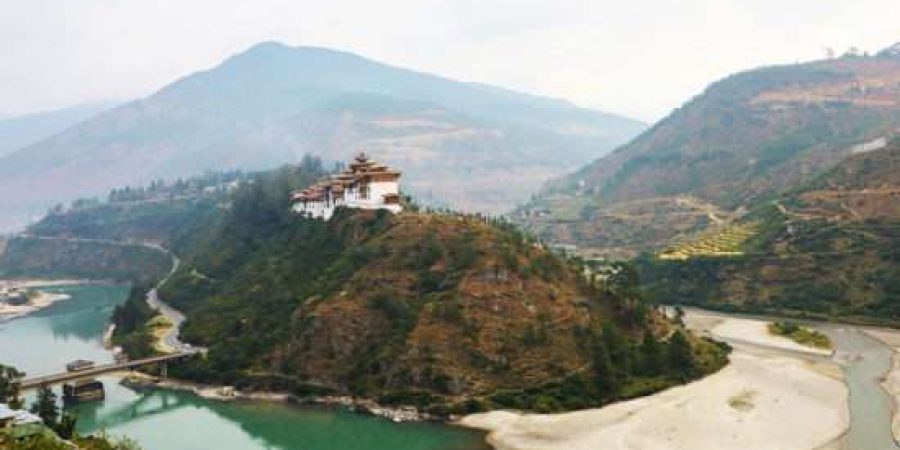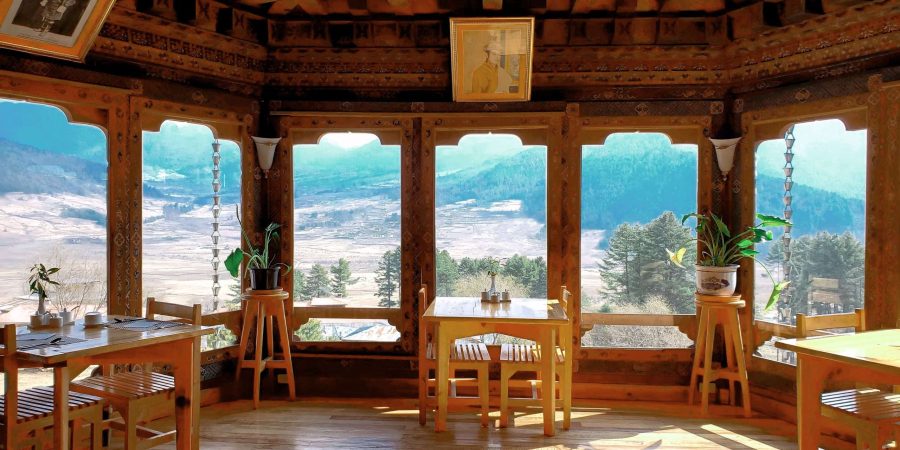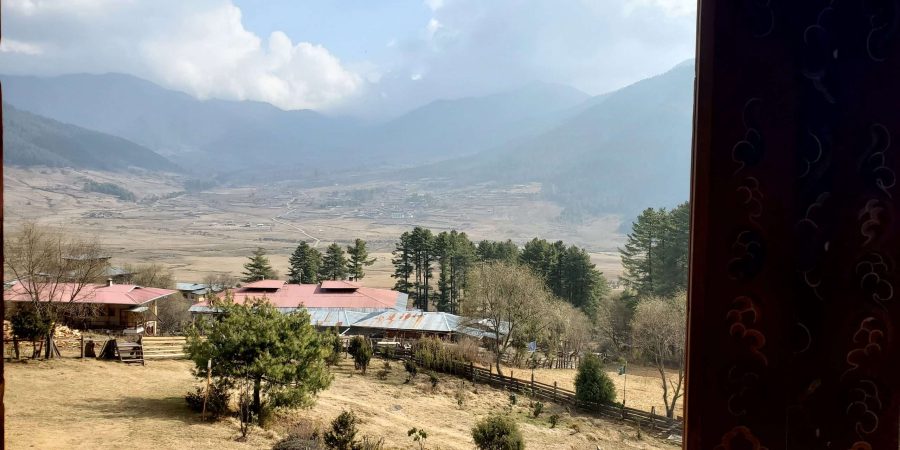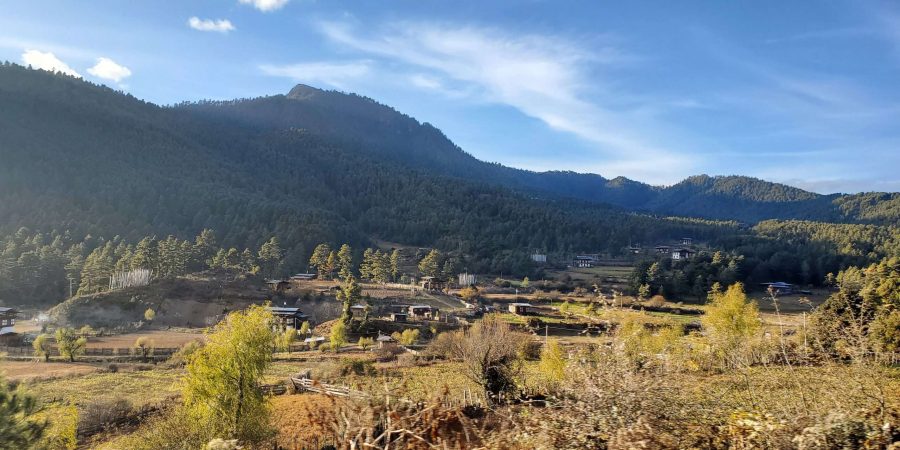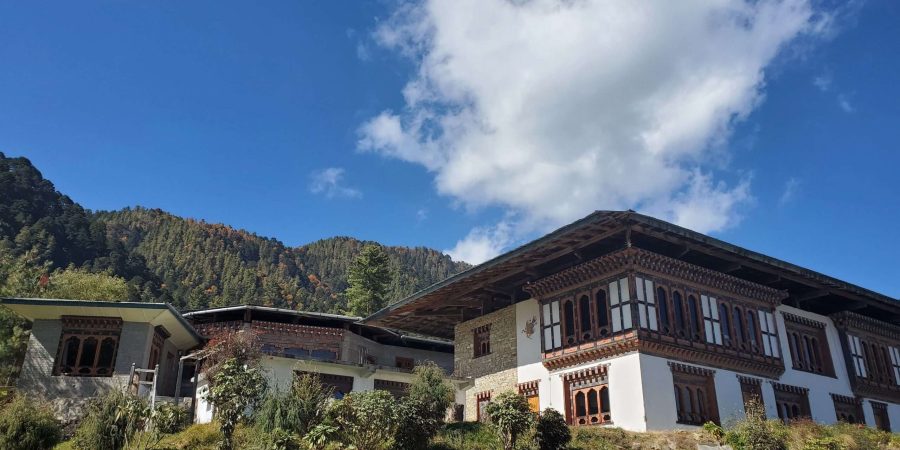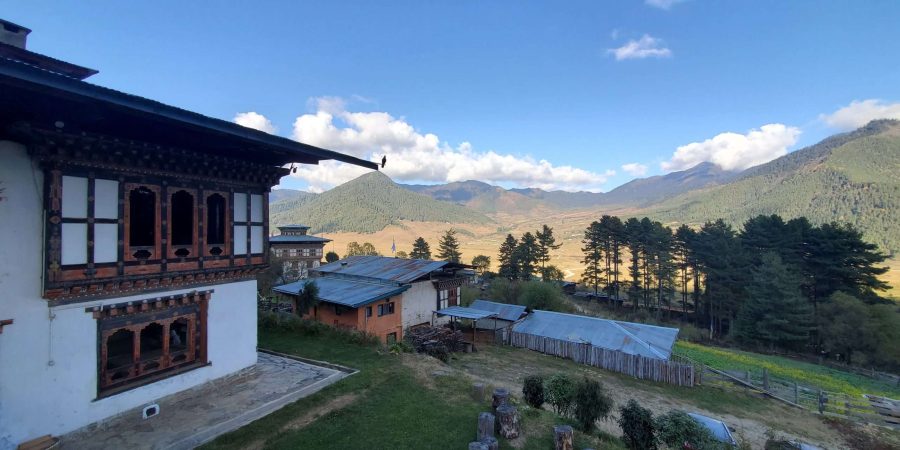This scenic dzongkhag (administrative district) is renowned for the historically significant Wangdue Phodrang Dzong, which, although was tragically damaged by fire in 2012, remains a focal point for visitors due to its majestic location atop a high ridge between the Punak Tsang Chhu and Dang Chhu rivers. The area is enveloped in legend, including the story of Zhabdrung Ngawang Namgyal naming the dzong after meeting a boy named Wangdi playing in the sand, symbolizing the region’s deep-rooted cultural traditions. Wangdue Phodrang acts as a strategic gateway, controlling routes to various parts of Bhutan, highlighting its historical significance as a center of power and religion. The dzong’s location was chosen for its commanding views over the valleys below, embodying the strategic and spiritual foresight of its founders. With the dzong’s reconstruction complete the area remains a testament to Bhutan’s resilience and commitment to preserving its cultural landmarks. The surrounding landscape, stretching all the way to the Pele La and Phobjikha Valley, offers visitors a glimpse into the untouched natural beauty and serene rural life of Bhutan, making Wangdue Phodrang a must-visit destination for those seeking to immerse themselves in the country’s rich heritage and natural wonders.
Map
Interesting Facts
- Historical Significance: The area is named after Wangdue Phodrang Dzong, founded by Zhabdrung Ngawang Namgyal in 1638 on a high ridge between the Punak Tsang Chhu and the Dang Chhu rivers. This location was chosen for its commanding views of the valleys below, and the dzong has played a crucial role in Bhutan’s history, serving as the site of the country’s second capital.
- Cultural Importance: Wangdue Phodrang Dzong has been a strategic point controlling the routes to Trongsa, Punakha, Dagana, and Thimphu. It was considered the third-most powerful ruling position in Bhutan after Paro and Trongsa. A legend associated with its founding tells of four ravens flying away in four directions from the site, symbolizing the spreading of religion to the four points of the compass.
- Radak Neykhang: This 17th-century temple, located by the tall cypress trees of the Wangdue district court, is dedicated to an ancient warrior king. It houses a collection of helmets, knives, and shields, and inside are five versions of the local protector deity Radrap.
- Wangdue Tsechu: A significant event in Wangdue is its annual tsechu (festival), particularly noted for the unfurling of the Guru Tshengye Thondrol, depicting the eight manifestations of Guru Rinpoche, on its final day. This event is a major draw, held in the nearby Tencholing Army Training Centre since the dzong’s fire damage.
- Modern Changes: The old town, which once lined the road to the dzong, has been relocated 3km north to the Bajo new town, marking a shift in the area’s urban landscape.
Attractions
No results found.

